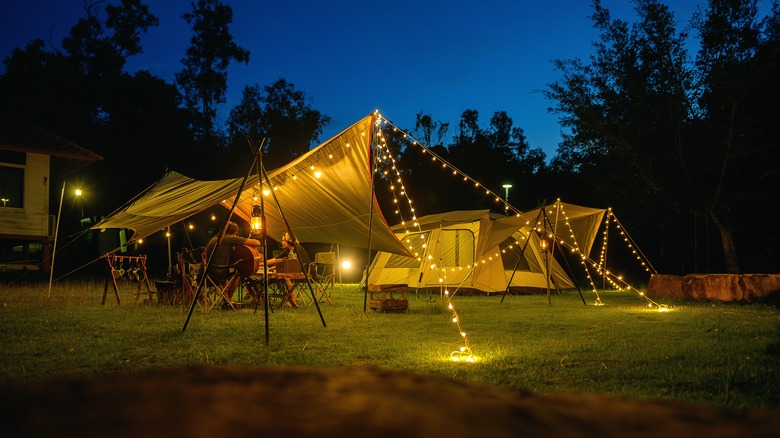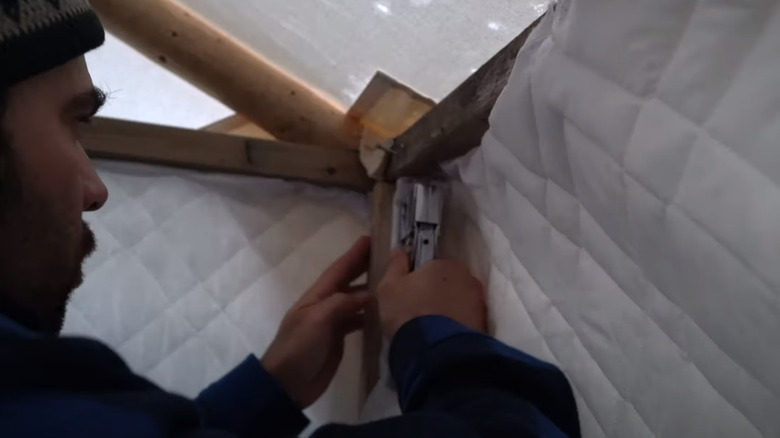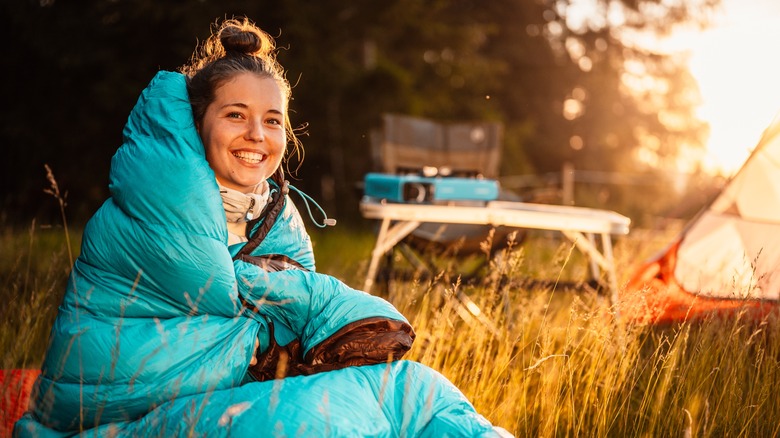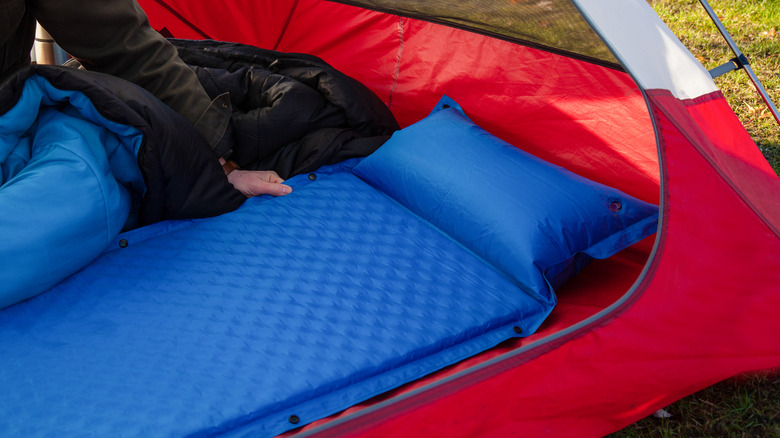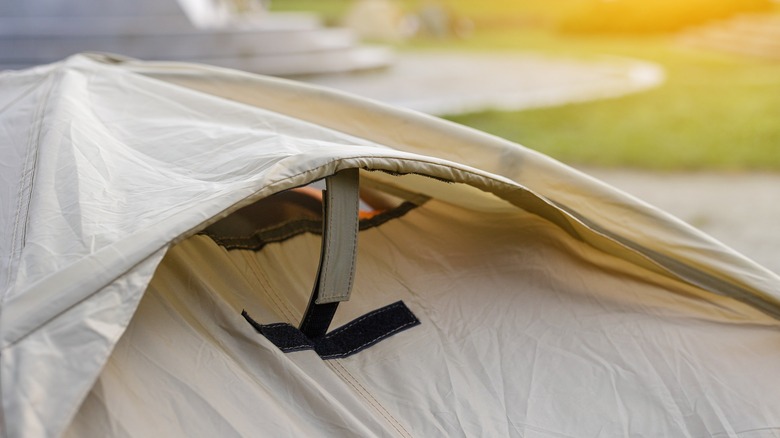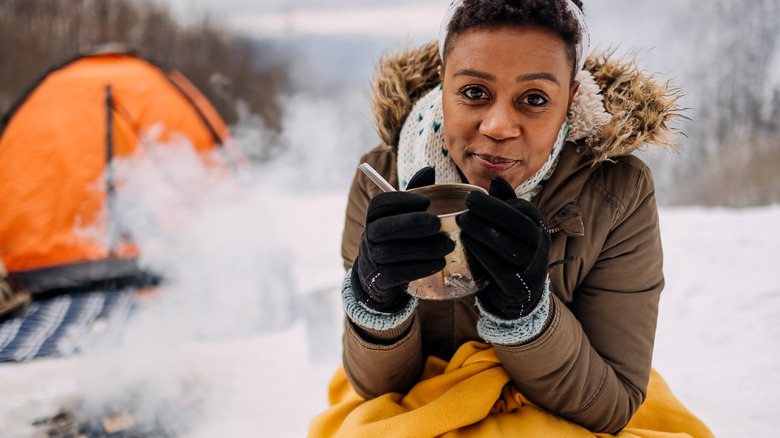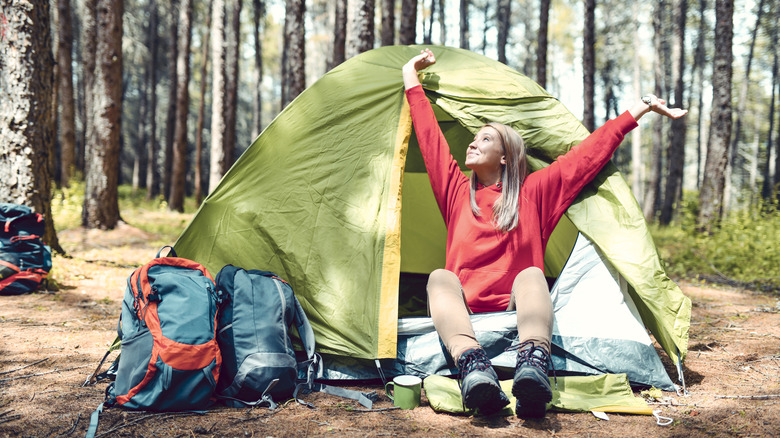Keep Your Tent Warm While Camping With These Pro Tips
Embarking on a camping adventure in cold weather unveils a unique and enchanting experience, where winter's serene beauty takes on a mystical charm beneath the glistening frost. The crisp air, the quiet stillness, and the untouched landscapes create a canvas for unforgettable memories. However, amidst the awe-inspiring magic of winter camping, there lies a fundamental need that can make or break the entire adventure: staying warm within the confines of your tent. From the choice of your shelter to the layers you wrap yourself in, each element plays a crucial role in transforming chilly nights into cozy retreats.
As the temperatures drop and the world outside your shelter transforms into a winter wonderland, the warmth inside your tent becomes not just a matter of comfort but a pivotal element for enjoyment and safety. That said, don't fret. In this guide, we're revealing practical tips and techniques for how to keep your tent warm during cold-weather camping.
Choose the right tent
Selecting the right tent sets the foundation for a warm and comfortable camping experience. When the mercury plummets and winter's icy breath surrounds you, a four-season tent becomes your stalwart ally. Engineered to withstand the harshest conditions, these tents are designed with reinforced materials, robust frames, and enhanced insulation. The term "four-season" may suggest exclusivity to winter, but these tents are versatile, providing comfort across all seasons. Their sturdy construction ensures stability in high winds, while the added insulation retains heat during colder months.
Additionally, a rainfly can act as an additional barrier against the cold. A rainfly is not just a shield against rain; it's a key player in temperature regulation within your tent. Beyond its primary role of repelling precipitation, a properly installed rainfly creates an additional layer of insulation, trapping warmth and preventing the intrusion of cold air. To maximize its effectiveness, ensure your rainfly is taut and covers the entirety of your tent. This not only safeguards against rain but also acts as a thermal barrier, minimizing heat loss through the tent's fabric, ultimately transforming your tent into a snug retreat against the chill of the night.
Insulate your tent walls
The ground beneath your tent can be an unyielding source of cold, sapping away precious warmth as you sleep. Enter the ground tarp or footprint — an indispensable component of your insulation strategy. A ground tarp acts as a shield, preventing heat loss to the cold earth below. It serves as a robust barrier against moisture, ensuring that dampness doesn't seep into your sleeping quarters. This simple addition not only provides a physical buffer from the chill but also aids in prolonging the lifespan of your tent by minimizing wear and tear. By investing in this foundational layer, you lay the groundwork for a restful night's sleep, shielded from the cold tendrils reaching up from the ground.
Inside your tent, your tent's walls, though protective, can benefit greatly from an extra layer of insulation. Thermal liners strategically placed along the interior can transform your tent into a cocoon of warmth (via Camping World). By affixing insulating materials to the walls, you create pockets of trapped air — nature's best insulator. This acts as a buffer against external temperatures, preventing the cold from permeating your sanctuary.
A quality sleeping bag is the key to a warm embrace
Investing in a quality sleeping bag is not just a choice; it's a commitment to the warmth and comfort that defines your night under the stars. Different sleeping bags come with temperature ratings indicating their comfort in specific conditions. Temperature ratings are the compass guiding you through the diverse climates of your camping adventures. This numerical indicator signifies the lowest temperature at which the sleeping bag provides a comfortable night's sleep. Understanding and matching this rating to your camping destination is pivotal.
In addition to the temperature limits of a bag, consider choosing a mummy-style bag. The mummy-style sleeping bag is the epitome of efficient warmth retention (via Koa). Its tapered design, snug hood, and contoured shape closely follow the contours of your body, minimizing open spaces where warmth could escape. Embracing you like a second skin, a mummy-style bag is a fortress against the cold. The hood cinches tightly around your head, trapping heat. The reduced interior volume means your body heat quickly warms the surrounding air, creating a microclimate of comfort. In the embrace of a mummy-style sleeping bag, the cold of the night is transformed into a distant memory as you revel in the warmth of your insulated cocoon.
Layer your sleeping pads
Insulated sleeping pads are the unsung champions of cold-weather camping. These pads create a barrier between your body and the chilly ground below, preventing heat from dissipating into the earth. The insulation in these pads acts as a thermal shield, reflecting your body heat back towards you. Opt for pads with high R-values (via REI), indicating superior insulation properties.
Combining different types of pads allows you to customize your comfort level and enhance insulation. Pairing foam pads with air pads, for example, offers a dual benefit. Foam pads provide a solid base, insulating against the ground, while air pads contribute additional cushioning and insulation. This dynamic duo creates a synergy of warmth and comfort, adapting to the unique needs of your camping environment. Experimenting with combinations allows you to fine-tune your sleeping setup, ensuring that you not only stay warm but also experience a restful night's sleep. By layering up with sleeping pads, you elevate your camping experience, transcending the chill of the night to find yourself on cloud nine.
Use blankets for heat, not just comfort
The tent floor, while providing a sheltered space, can be a source of heat loss. Introducing a heat-reflective blanket as a barrier between you and the tent floor acts as a formidable defense against the cold seeping from below. Lay the blanket beneath your sleeping bag or pad, creating a reflective shield that prevents your body heat from escaping into the ground. The insulating properties of these blankets, combined with their ability to bounce warmth back towards you, elevate your tent's floor into a cozy haven rather than a conduit for the cold.
Blankets aren't just for the floor; they can also be strategically hung along the tent walls, adding an extra layer of insulation. Just like thermal liners, this method creates pockets of trapped air between the blanket and the tent fabric, forming a buffer against external temperatures. Utilizing the principle of radiant heat reflection, these blanket hangings contribute to the overall warmth within your tent. Secure the blankets with clips or ties, ensuring they remain in place throughout the night. The result is a tent adorned with not just fabric but with layers of thermal protection.
Ventilate your tent strategically
As your breath meets the cold night air inside the tent, condensation becomes a potential challenge. Proper ventilation is the antidote to this moisture menace, which can create an uncomfortable sleeping experience. By allowing fresh air to circulate, you mitigate the risk of condensation forming on the interior surfaces of your tent. Mesh panels, windows, or adjustable vents play a crucial role in maintaining a healthy airflow. When warm, moisture-laden air escapes through these openings, it reduces the likelihood of water droplets forming on the tent walls. This strategic balance ensures that your tent remains dry and free from the damp chill that condensation can bring.
Vent placement is truly an art, and strategic positioning can make all the difference. The prevailing wind direction, the orientation of your tent, and the exterior weather conditions should all be considered when deciding how many and which vents to open.
Dress for success
The art of staying warm extends beyond the confines of your sleeping bag. Bedtime attire plays a pivotal role in temperature regulation. The key is to think in layers, much like the insulation strategy within your tent. Begin with a moisture-wicking base layer that draws sweat away from your skin, preventing that clammy chill. Over this base, add an insulating layer to trap and retain body heat. Fleece or thermal tops and bottoms are excellent choices. Finally, the outer layer should be a breathable yet protective material, shielding you from the cold air while allowing excess heat to escape.
Your choice of sleepwear should be tailored to the expected low temperatures. Consider wearing a hat to retain heat, as a significant amount escapes through the head. Additionally, keep a pair of warm socks handy to keep your feet snug during the night.
By dressing for success at bedtime, you create a personal microclimate within your sleeping bag. This thoughtful approach to clothing choices becomes a cornerstone in mastering the art of staying comfortably warm during your cold-weather camping escapades.
Create bedside warmth with hot water bottles
Enter your sleeping bed cozily with a timeless and simple ally — hot water bottles. Before bedtime, fill a sturdy and heat-resistant bottle with hot water. Secure the cap tightly, ensuring no leaks or spills.
Proper placement of the hot water bottles is crucial for optimal results. Nestle them at the foot of your sleeping bag, allowing the rising warmth to gradually envelop your lower extremities. This not only keeps your feet toasty but also creates a cozy warmth that ascends through the bag. Alternatively, place a hot water bottle close to your core, at the midpoint of the sleeping bag. This central placement radiates warmth, providing a comforting heat source for your entire body. Remember to wrap the bottle in a cloth or sock to prevent direct contact with your skin.
With the careful placement of hot water bottles, your sleeping bag transforms into a haven of warmth, embracing you with a gentle, consistent heat throughout the night. This age-old technique becomes a reliable companion in the quest for a restful and cozy night's sleep amidst the wintry landscape.
Sip on warm drinks
Cultivating a pre-bedtime ritual is a strategic approach to enhancing your body's ability to retain warmth. Embrace the warmth of a hot drink, whether it's a soothing herbal tea, a cup of cocoa, or a steaming mug of your favorite warm beverage. The gentle heat not only warms you from the inside but also sets the stage for a cozy night's sleep.
To fuel the internal furnace that keeps you warm during the night, consider incorporating high-energy snacks into your pre-bedtime routine. Nuts, trail mix, or energy bars are excellent choices, providing a sustained release of energy throughout the night. The process of digestion generates heat within the body, and these snacks serve as your personal reserve of warmth. They are not only a delicious treat but also a practical and efficient means of maintaining internal temperature during colder nights.
Last, hydration is a cornerstone of cold-weather camping, often overlooked in the pursuit of warmth. Cold air has a dehydrating effect, and staying well-hydrated is essential for regulating body temperature. A hydrated body is more efficient at retaining heat, contributing to a comfortable and warm night's sleep.
Rise and shine with a warm-up routine
No one enjoys leaving the embrace of their bed in the winter. The transition from the warmth of your sleeping bag to the crisp morning air can be a shock to the system. Light exercises will awaken your body and generate warmth from within. Engage in simple stretching exercises that target major muscle groups. Focus on movements that increase circulation and flexibility. Arm circles, leg swings, and torso twists are excellent choices. Gradually increase the intensity to raise your heart rate, promoting blood flow and igniting your internal furnace.
As certified personal trainer Andy Nieradko explained to KOA, "When you're traveling, yoga and stretching are really good for you. Muscles you don't use atrophy. If you're sitting in a car and driving for hours, [your body needs] to be stretched to get the blood flowing again." Of course, the same goes for sleeping all night in a cramped tent. Along with yoga, Nieradko incorporates tai-chi into his camping workouts.
These exercises not only warm your body but also enhance your overall alertness and well-being, getting you ready for the next stage of your adventure.
